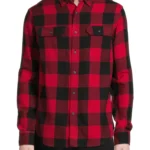The balaclava is a curious piece of headwear that has woven its way through history, fashion, and culture. Often seen as an essential accessory for winter sports enthusiasts or those venturing into the cold wilderness, this versatile garment carries with it a rich tapestry of stories. From its military origins to its appearances in modern streetwear, the balaclava transcends mere functionality—it embodies mystery and rebellion.
As we peel back the layers of this intriguing item, we uncover not just its practical uses but also the myriad ways it has influenced pop culture and sparked debate. Whether you’re looking to stay warm on a chilly day or make a bold fashion statement, understanding the complexities behind the balaclava will enhance your appreciation for this unique article of clothing. Let’s dive into its fascinating journey through time!
The Origins of the Balaclava
The balaclava has a rich history that traces back to the Crimean War in the mid-19th century. British soldiers wore this distinctive headgear during harsh winters, seeking warmth and protection against the biting cold.
Named after the Battle of Balaclava, where it gained prominence, its design featured an open face area for visibility. This practicality made it a preferred choice among troops facing extreme weather conditions on battlefields.
Interestingly, variations of similar designs have existed across cultures long before then. From Russian peasants to Scandinavian mountaineers, different communities crafted their own versions for warmth in frigid climates.
As time progressed, this simple yet effective garment transitioned from military use into civilian life. Its versatility allowed it to adapt across various fields—sports enthusiasts embraced it while adventurers sought its protective qualities during expeditions.
The Balaclava in Popular Culture
The balaclava has made its mark across various realms of popular culture. From movies to music, this accessory often symbolizes mystery or rebellion.
In action films, characters don the balaclava for stealthy heists and daring escapes. It’s a visual cue that heightens tension and intrigue. Think of iconic scenes where anonymity is key; the balaclava delivers.
Music artists have also embraced it as part of their persona. Hip-hop and punk musicians frequently wear them during performances, challenging norms while creating an edgy image.
Moreover, social movements have adopted the balaclava as a symbol of protest. Its ability to obscure identity empowers individuals demanding change without fear of repercussion.
Even in fashion weeks, designers showcase avant-garde interpretations that transform this practical garment into chic statements on runways worldwide. The balaclava transcends its origins, continually reinventing itself within our cultural landscape.
Controversies Surrounding the Balaclava
The balaclava is not without its share of controversies. Its association with various groups has painted a complex picture over the years. From political protests to criminal activities, this garment often evokes strong reactions.
In some contexts, wearing a balaclava can symbolize resistance or rebellion. Activists use it as a means to conceal their identities during demonstrations. This has led many to view the piece as emblematic of defiance against authority.
Conversely, in other scenarios, the balaclava represents fear and intimidation. Media coverage frequently highlights its use in robberies and gang-related crimes. Such portrayals contribute to its negative connotation among certain populations.
Fashion designers have embraced the balaclava too, adding layers of irony to its perception. High-end brands showcase it on runways while critics question whether this trivializes serious issues surrounding identity and anonymity associated with the piece.
Modern Uses and Adaptations of the Balaclava
Today, the balaclava has evolved far beyond its military origins. It’s become a staple in outdoor activities like skiing and snowboarding. Enthusiasts appreciate its warmth and coverage against harsh weather.
Fashion also embraces this accessory. Designers showcase stylish iterations on runways, turning practical gear into trendy pieces. Streetwear brands often incorporate bold patterns and colors, making the balaclava a statement item.
In urban settings, it has gained notoriety as part of protest attire. Activists use it to conceal their identities while advocating for various causes. This adds layers of meaning to an already complex garment.
Additionally, content creators and influencers have popularized unique ways to wear balaclavas in everyday life. From casual outings to themed events, they demonstrate versatility that appeals to diverse audiences across social media platforms.
How to Style and Wear a Balaclava
Styling a balaclava can be both functional and trendy. Start with the basics: choose a color that complements your outfit. Classic black or grey are versatile, while vibrant colors add a pop.
For casual wear, pair it with oversized jackets or hoodies. This creates an edgy look perfect for street style enthusiasts. Layering is key; let the balaclava peek out from under your outerwear for added flair.
When heading outdoors, combine it with ski gear or tactical outfits for practicality. A well-fitted balaclava not only keeps you warm but also elevates your sporty aesthetic.
Accessorizing matters too—consider adding sunglasses or statement earrings to draw attention away from just the face covering. Experimenting is encouraged; after all, fashion should feel personal and fun!
Think about how you wear it—pulled down around your neck during casual moments or snugly over your head when it’s chilly outside adds versatility to any look.
Conclusion: The Enduring Legacy of the Balaclava
The balaclava has woven itself into the fabric of history, culture, and fashion. Its origins as a practical garment for soldiers have transformed it into a symbol that resonates across various realms today. From its rugged utility in extreme conditions to its stylish adaptations on city streets, this versatile piece continues to capture imaginations.
While controversies may surround its use, particularly in political contexts or criminal activities, the balaclava still serves many legitimate purposes—from athletics to outdoor exploration.
As style trends evolve, so too does the way we wear and perceive this iconic accessory. It remains an essential item in cold weather gear but has also found new life within modern streetwear aesthetics.
The legacy of the balaclava endures not just as a functional piece of clothing but as an emblem that reflects both individual expression and collective identity throughout time. Whether you view it through a lens of practicality or fashion-forward thinking, one thing is clear: the story of the balaclava is far from over.


